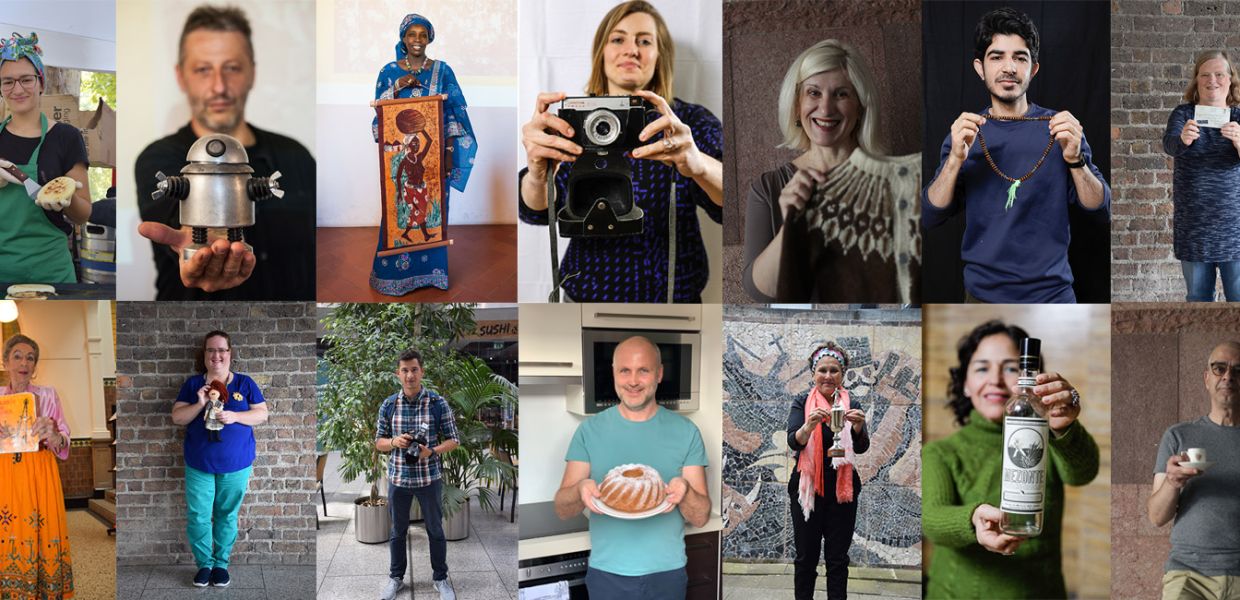Curated by Europeana - and the people of Europe
More curated and high-quality content, together with public campaigns such as Europeana Migration and transcribathons, make Europeana Collections relevant and interesting to today’s audiences.

- Title:
- Contributors share their migration stories and objects
- Creator:
- Europeana Foundation
- Date:
- 2018
- Institution:
- Europeana Foundation
- Country:
- The Netherlands
- Copyright:
- CC BY-SA
In the last year, two new thematic collections were introduced. Europeana Newspapers gathers over 4 million newspaper pages, spanning four centuries and 20 countries from across Europe. More than 800,000 newspaper issues are available in Optical Character Recognition (OCR) full-text, meaning they are fully searchable and readable in text format. While Europeana Archaeology gathers over 2 million items (images, texts, 3D objects, videos) of archaeological heritage from palaeolithic to contemporary times including movable and immovable heritage, archaeological landscapes and archaeological archives.
In March 2019, the Europeana Women’s season promoted stories and editorials including 12 blogs, four galleries and one exhibition about women’s history on social media each day of the month. These stories used cultural heritage content from 80 institutions from over 20 countries around the world. On International Women’s Day (8 March) the final chapter of exhibition Pioneers: Trailblazing women in the arts, sciences and society was published. The exhibition performed extremely well with about 35,000 visitors so far and excellent audience reviews.
Two more exhibitions were also added. Heritage at Risk (available in seven languages) explores the natural and man-made threats to cultural heritage, from ancient times until today. And The Rise of Literacy in Europe shows how a passion for the written word moved out of the Church and into society at large over the last four centuries.
Over several years of collecting personal stories for Europeana 1914-1918, it has become clear that encouraging citizens to think about their heritage in the past and present can be transformational, instilling pride and opening up new perspectives on personal identities.
Through the Europeana Migration campaign, young and old joined in online - contributing to a migration thematic collection on Europeana Collections - and in person, sharing their personal migration stories, with accompanying pictures, diaries, videos and letters. Since last year, 21 collection day events, and associated exhibitions, lectures, panel discussions and social events, have taken place in 12 countries, working with more than 30 partner organisations. Over 3,000 people attended, sharing more than 692 stories and more than 1,200 personal objects.
Highlighting the work of Europeana 1914-1918, the Centenary Tour included an online exhibition, Visions of War, and monthly focusses on different parts of the Europeana 1914-1918 collection. Four transcribathon events (Greece, Germany, Italy, Belgium) and one collection day event (Hungary) engaged citizens directly. During the final event, 17 previous transcribathon winners from around Europe participated in a European transcribathon championship. The talented and multilingual participants transcribed over 313,000 characters and 298 documents.
In addition, associated European-funded projects Migration in the Arts and Sciences, Rise of Literacy and Byzantine Art and Archaeology were able to improve existing digitised content and add it to Europeana Collections along with thousands of newly digitised good-quality items. These projects also contributed with editorial content for Europeana Collections in the form of blogs, galleries and an exhibition.

